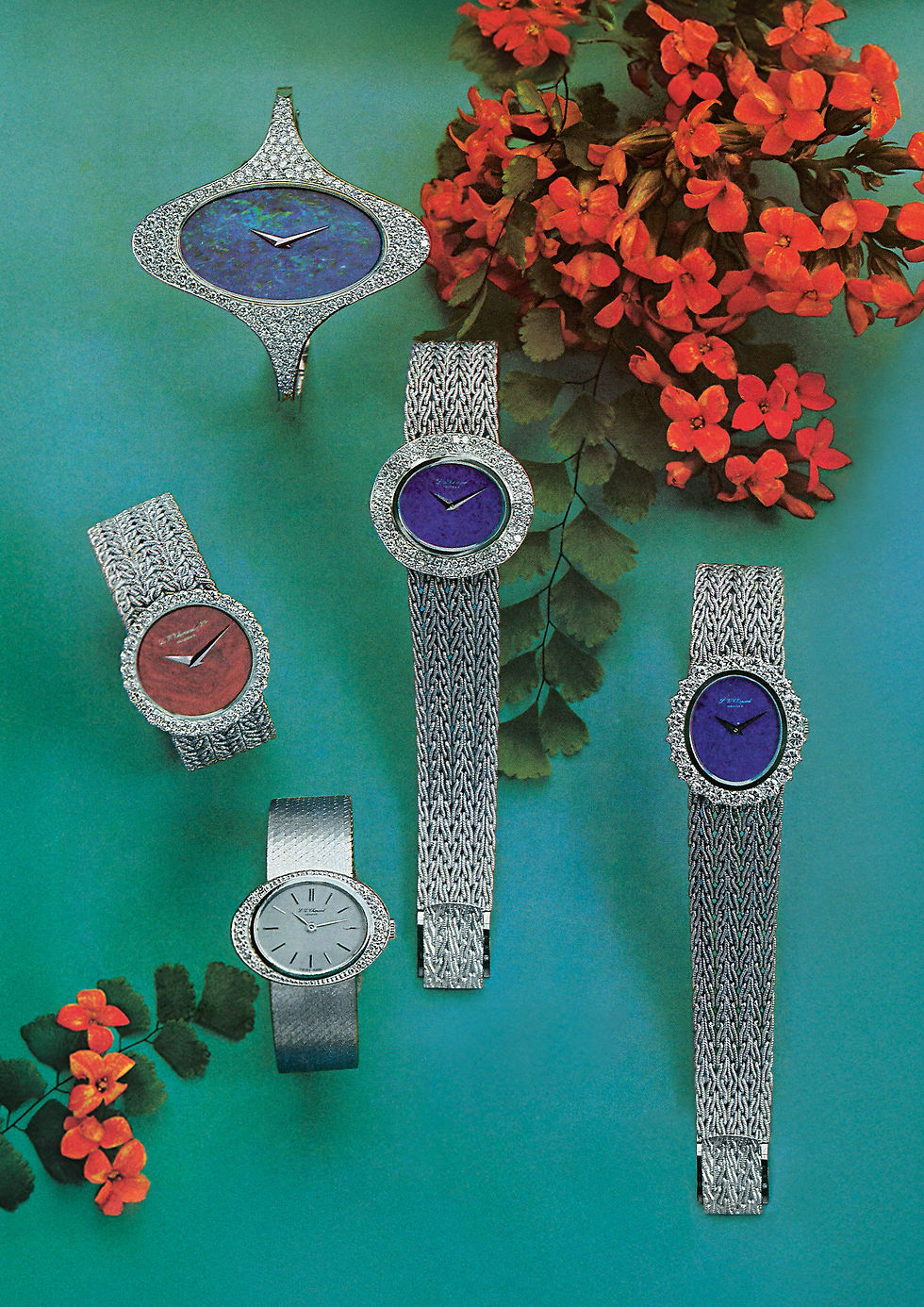Van Cleef & Arpels AN INVITATIONTO DREAM AND ESCAPE
- DUNES

- Sep 5, 2023
- 4 min read
In 1910 – four years after the founding of Van Cleef & Arpels – André Suarès published an account of his Italian journey. Le Voyage du Condottière is a ramble through the cultural centers of the “Boot” (Venice, Florence, and Naples), and an exploration of the Renaissance masters (Leonardo da Vinci, Botticelli, Michelangelo, etc.). For the French writer and poet, “like everything else that matters in life, a great voyage is a work of art: a creation1”.
Following in the footsteps of both that author and all the travelers who made their own “Grand Tour2”, the Maison has reinterpreted this journey of initiation that left its mark on the artistic and cultural landscape of Europe. Born in England in the 16th century, the Grand Tour – so named in reference to a circular journey returning to its starting point – became popular during the 18th and 19th centuries. Young aristocrats undertook this expedition across the continent (lasting two to three years) to finish off an over-academic education, forge their character, broaden their minds, and ensure their entry into society. Highly recommended, the experience included two compulsory passages: a visit to Paris and stays in the main cities of Italy.
While northern France, Switzerland, the Alpine passes and the provinces of Germany were all popular stages, the exact itinerary was variable. It was above all a personal odyssey, structured by political events, wars, artistic movements and fashions, as well as private factors (various departure points, social status, financial resources, personal preference). A true ideal of intellectual, cultural and social education, the Grand Tour promised practical studies in art and literature. The experience was punctuated by the exploration of the emblematic sights of the visited countries, whether relics of a glorious past or modern reflections on their contemporary importance. Although its cost originally made it the preserve of the elite, it attracted a broader public over the years, with both artists and intellectuals.
In the original version standardized by the British, the itinerary first ran from London to France. In Paris, travelers admired the works of the “Grand Siècle”, particularly those undertaken under Louis XIV – the Sun King – which had made the city a paragon of good taste. Borrowing from antiquity as much as the Renaissance, this French classicism required a stay in Italy to be fully understood. At Herculaneum and Pompeii – buried by the eruption of Vesuvius in 79 – the archeological digs of the 1730s and 1740s had revealed ancient treasures: ruins, everyday objects, and jewelry – relics of an idealized civilization – which became objects of study. Spread throughout Europe by accounts of these journeys, this “Grand Goût”3 fostered the emergence of neoclassicism4.
Rococo – with its sinuous shapes and busy decoration – gave way to the pure simplicity of antiquity. This love of the old extended to jewelry. From combs, diadems and necklaces to pendant earrings, bracelets and belt buckles: jewels – in gold, like the examples unearthed – took on symmetric forms and harbored pearls and stones engraved with motifs borrowed from antiquity. Relief-sculpted cameos and intaglios, engraved in counter-relief on precious stones, were sought-after objects. From reusing ancient artworks discovered in the excavations to contemporary creations, this fashion gave rise to an entire industry, and the development of imitative techniques to make these objects accessible to all. While in Italy, engraved seashells5 – which were easier to work – became genuine travel souvenirs, the English manufacturer Wedgwood used porcelain to reproduce antique designs. Roman micro-mosaics also attracted renewed interest: in jewelry, this association of tiny slabs – known as tesserae – of colored glass (or sometimes enamel or earthenware) within a metallic mount made it possible to wear antique landscapes of dreams as ornaments.
On the outward or return journey, crossing the Alps created a real esthetic shock6. The grandiose splendor of a huge and inaccessible Nature encouraged the development of new artistic theories (the Sublime7) and movements. The picturesque and – from 1820 on – romanticism both exerted an influence on the art of jewelry. On the return journey, following these physical and intellectual ordeals, Baden-Baden was a welcome stop: an opportunity to discover Germanic folklore and the comfort of a spa town. In the 19th century, this passion for travel endured, but the development of means of transport and communication altered its expression.
The fashion of the Grand Tour gradually gave way to “tourism8” and its associated leisure activities, including to more and more distant destinations. Today, it is the cultural heritage of its birthplace, Europe, that the Maison is reinterpreting, with the Le Grand Tour raconté par Van Cleef & Arpels High Jewelry collection. Sculptural necklaces and girandole earrings evoke Renaissance jewels; wide bracelets faithfully reproduce views of well-known sites, in the style of antique micro-mosaics; astonishing clips are composed of vintage cameos and intaglios. The 70 pieces approximately are an invitation to discover the Maison’s creativity, the excellence of its savoir-faire and its unique taste in gems. But they are also an opportunity for Van Cleef & Arpels to reassert its attachment to the arts, and to demonstrate that a great voyage is indeed a work of art in itself.
Nicolas Bos, President and CEO of Van Cleef & Arpels
#VanCleefandArpels












Comments